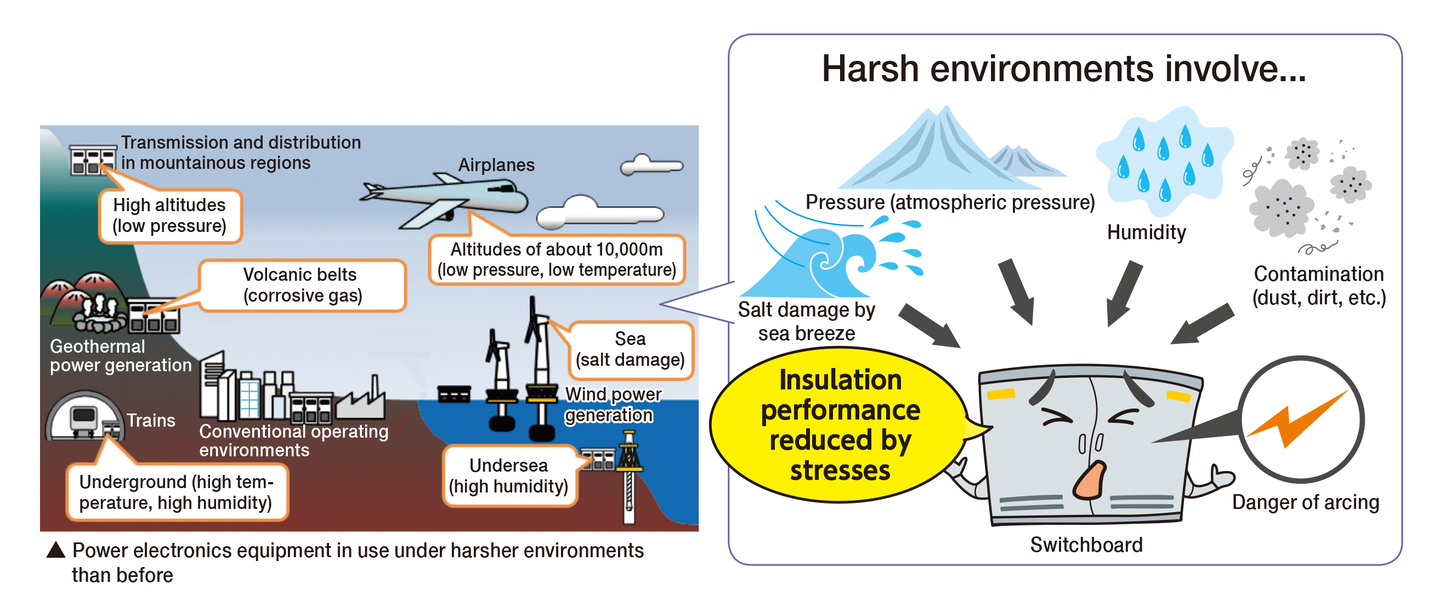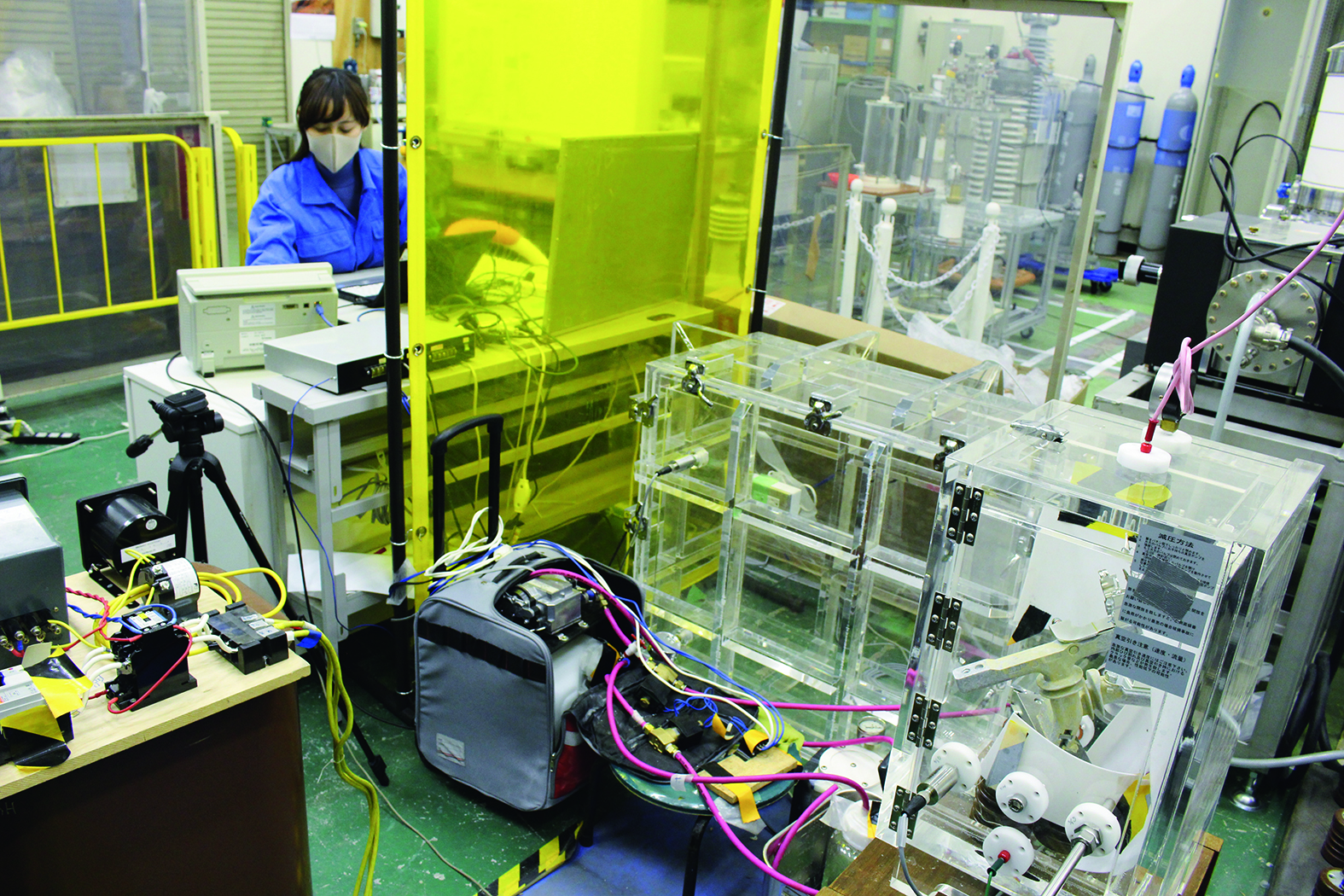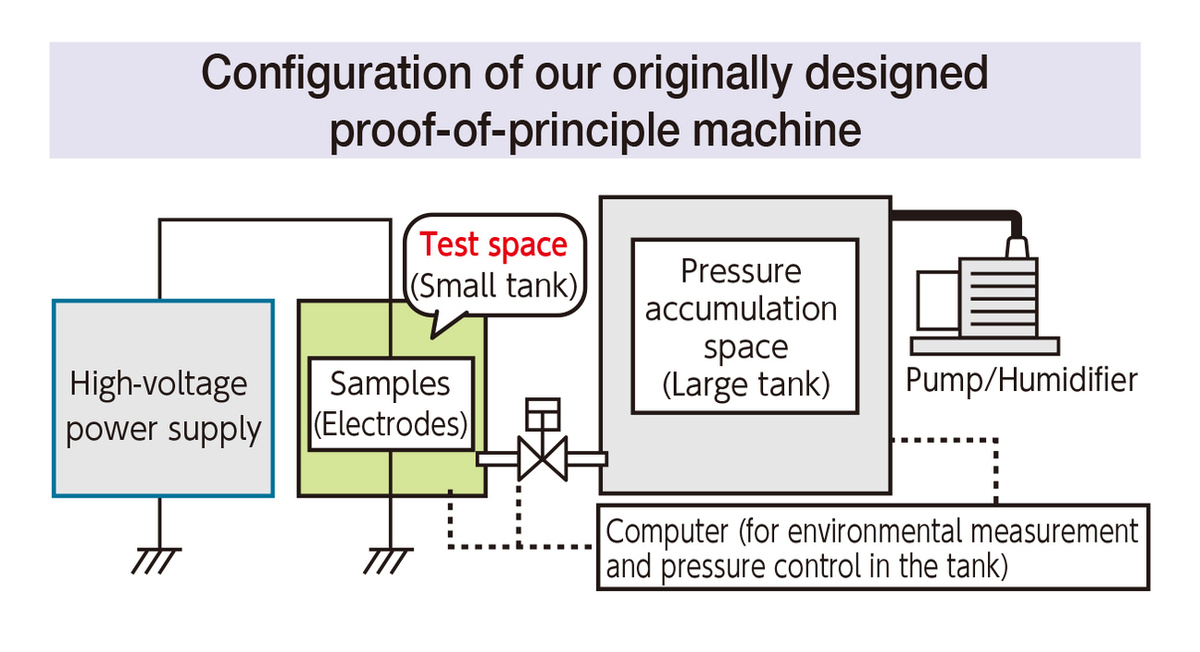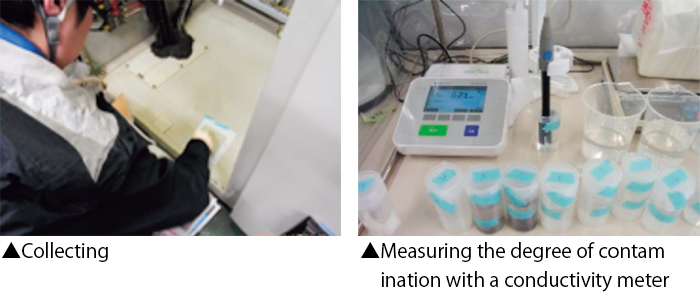One Step Ahead! Fuji Electric's Fundamental Technologies
We provide an overview of our latest fundamental technologies that enhance our product development capabilities.
Insulation Evaluation Technology for Composite Stress
Enhancing product insulation performance with simulation technology to reproduce harsh environments
Enhancing product insulation performance with simulation technology to reproduce harsh environments
Power electronics equipment operating in harsh environments along with the expansion of the scope of applications
Electrical insulation is a function indispensable to transformers, circuit breakers, switches, and various other types of power electronics equipment. Insulation plays the role of protecting equipment and preventing electric shocks to users. It does this by using various parts and devices to cut off the current flowing through electrical equipment and electrical and electronic circuits.
Recently, the scope of application of power electronics equipment has been increasing due to the expansion of global demand for electric power and the spread of renewable energy, which has led to the use of power electronics equipment in harsher environments than before, including high altitudes, marine applications and tropical and cold regions. As a result, multiple factors such as atmospheric pressure, temperature and humidity, corrosion, and salt damage can combine in harsh environments to reduce the insulation function of products.
To solve this problem, we have developed a simulation technology that evaluates a product's insulation performance by reproducing composite stress environments, applying various combinations of these factors to varying degrees.

Fuji Electric's industry-leading insulation evaluation technology

We are taking the lead in developing this simulation technology. This activity started in 2016. Based on data obtained from research papers and experiments, we have developed an original system (proof-of-principle machine) to reproduce composite stress environments. We also visit customers to collect data in environments where our products are actually used. Based on such data, we have developed mathematical models to calculate the optimum insulation distance in terms of design and to simulate the timing for maintenance required to maintain the insulation performance.
We have the capability to lead the industry in technology development, which is backed by our long track record, for example, of providing products to Japanese customers who demand world-class quality products, and of developing large numbers of products suitable for their operating environments, mainly systems and equipment for plants.
Reproducing harsh environments using a proof-of-principle machine

In order to simulate insulation performance under harsh environments, we collect necessary data through experiments using a principle verification machine (see the figure on the right). Electrodes to be mounted on electrical equipment and power distribution equipment are installed in a small tank, which is used as a test space. While changing the air pressure in the tank and the voltage of the electricity flowing into the electrodes, we collect the condition values found when dielectric breakdown* occurs and an arc is generated due to composite stress.
Because the insulation performance is also degraded by dirt adhering to the products, we apply sand and salt to the electrodes to reproduce these conditions. The internal rules for product quality specify in detail the amount and ratio of sand and salt to be applied during performance tests.
-
*
-
A phenomenon in which insulation is lost and a large current flows when the voltage applied to an insulator reaches a certain limit
Visiting customers to investigate product operation environments

In order to establish a more accurate simulation technology beyond in-house research, engineers visit actual customers who use our products to investigate their product operation environments and collect data. For example, we conducted an environmental investigation of salt damage and contamination by visiting electrical equipment rooms of wind power plants near the sea that are exposed to large amounts of salt, and electrical machinery rooms of major sta― tions in Tokyo where running vehicles cause dust and contamination to accumulate. The collected dust and solutions are brought back, and the components and the degree of contamination are analyzed with electron microscopes and conductivity meters.
In the future, we aim to establish this simulation technology by completing a proof-of-principle machine for composite stress of contamination and pressure by the end of FY2020, as well as low-temperature environments in FY2021.
Voices of developers

Our mission is to create innovation through insulation and discharge application technologies. In addition to the technology presented here, we are working together with many departments to develop technologies that will contribute to our business, such as support for the design and development (reliability improvement) of various high-voltage devices ranging from substation equipment to power semiconductors, diagnostic services to detect signs of dielectric breakdown, and development of electrostatic precipitators for ships.
The article and the affiliations are at the time of coverage.
